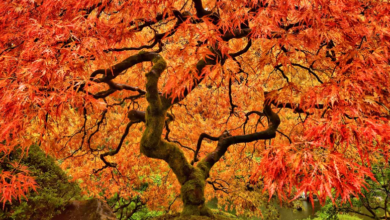Discovering Stars-923: A Simple Guide to Understanding Their Cosmic Role

Stars-923 are fascinating objects in our universe that help us learn more about space. These stars, known as Stars-92, play a big role in our understanding of how stars are born, live, and die. If you’re curious about what makes Stars-923 so special, you’re in the right place!
In this blog, we’ll explore the different stages of Stars-92, from their beginnings in stellar nurseries to their final stages as white dwarfs or black holes. We’ll also look at how these stars influence our galaxy and why they’re important for us to study.
What Are Stars-923?
Stars-923 represent a specific category of stars in the universe. These stars are distinguished by their unique characteristics and stages of life. While the name “Stars-92” might sound technical, it essentially refers to a range of stars with particular attributes that make them significant in the study of astronomy. Understanding Stars-93 helps scientists learn more about stellar phenomena and the life cycles of stars.
The Birth of Stars-923
The journey of Stars-92 begins in what are known as stellar nurseries. These are vast regions filled with gas and dust where new stars are born. Gravity pulls the gas and dust together, forming clumps called protostars. As these protostars gather more mass, they heat up and start nuclear fusion in their cores. This process marks the birth of a new star, including Stars-92.
Stellar nurseries are essential for star formation. They provide the materials and conditions needed for new stars to form. Without these regions, there would be no new Stars-93 or any other stars in the galaxy.
The Life Cycle of Stars-923
Stars-923 go through various stages in their life cycle. Here’s a simplified overview:
- Main Sequence Stars-923: Most Stars-92 spend most of their lives in this stage. They are stable and spend their time converting hydrogen into helium in their cores. This process produces the energy that makes them shine.
- Red Giants: As Stars-93 age and use up their hydrogen fuel, they expand and cool, becoming red giants. This stage is marked by a significant increase in size and brightness.
- The Final Stages: The end of a Star-923’s life depends on its mass. Smaller Stars-92 may shed their outer layers and become white dwarfs. Larger stars may explode in supernovae, leading to neutron stars or black holes.
How Stars-923 Affect the Galaxy
Stars-923 play a crucial role in the galaxy. They are involved in forming planetary systems and spreading elements through supernovae. These elements, like carbon and oxygen, are essential for the formation of planets and the development of life.
The explosion of massive Stars-92 in supernovae enriches the interstellar medium with heavy elements, which can later form new stars and planets. This continuous cycle of creation and destruction is vital for the galaxy’s structure and evolution.
Observing Stars-923
Astronomers use various tools to study Stars-93. Telescopes, both on Earth and in space, allow scientists to observe these stars and gather data about their properties. For instance, the Hubble Space Telescope has provided invaluable insights into distant Stars-92 by capturing clear images that are free from the distortion of Earth’s atmosphere.
Spectroscopy is another technique used to analyze the light emitted by Stars-92. By examining the spectrum of light, scientists can determine the composition, temperature, and other characteristics of these stars.
The Cultural Significance of Stars-923
Stars have always been a source of inspiration and wonder in human culture. Throughout history, Stars-92 have been featured in mythology, art, and literature. They have guided explorers and navigators and have been symbols of hope and mystery.
In ancient times, sailors relied on stars to navigate the seas. Today, Stars-92 continue to inspire artists and writers, symbolizing beauty and the vastness of the universe. Their presence in various cultural contexts highlights their significance beyond just scientific study.
Conclusion
Stars-923 offer a profound glimpse into the universe, from their formation in stellar nurseries to their impact on the galaxy. As we continue to explore and study these stars, we gain a deeper understanding of the cosmos and our place within it. Each discovery about Stars-92 enriches our knowledge and brings us closer to unraveling the mysteries of the universe. Whether through their life cycles or their influence on the galaxy, Stars-92 remain a key focus for astronomers and a source of fascination for all who look up at the night sky.
FAQ’s
What are Stars-923? Stars-923 are a category of stars with unique characteristics that help scientists understand stellar phenomena and the lifecycle of stars.
How are Stars-923 formed? Stars-92 form in stellar nurseries where gas and dust clump together under gravity, eventually heating up to start nuclear fusion.
What stages do Stars-923 go through in their lifetime? Stars-92 typically go through the main sequence, red giant, and final stages, which can include becoming white dwarfs, neutron stars, or black holes.
Why are Stars-923 important to the galaxy? Stars-92 play a crucial role in forming planetary systems and spreading elements through supernovae, contributing to the galaxy’s structure and evolution.
How do scientists observe Stars-923? Scientists use telescopes and spectroscopy to study Stars-92. Telescopes capture images, while spectroscopy analyzes the light emitted by the stars to determine their properties.
What is the significance of Stars-923 in human culture? Stars-92 have inspired mythology, art, and literature throughout history, serving as symbols of beauty, guidance, and mystery.
How do Stars-923 impact the formation of new stars and planets? The elements created by Stars-92 during their lifetimes and through supernovae enrich the interstellar medium, which helps in the formation of new stars and planetary systems.



